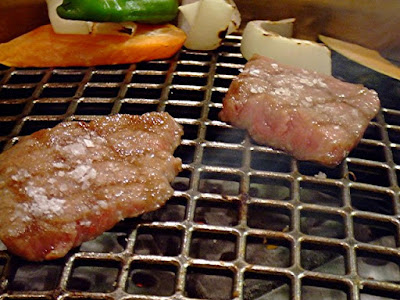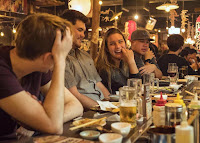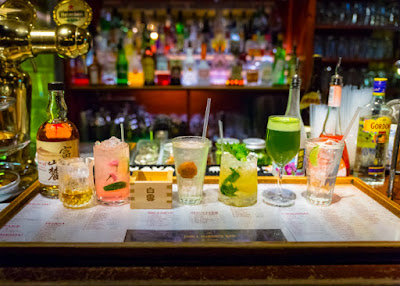Like many places in Japan, Aizuwakamatsu is home to some amazing food. Its biggest claim to fame could be Kitakata Ramen, one of Japan’s top three ramen dishes, but it is also proud of its unique dishes such as Negi Soba and Bandai Katsudon.
In the final part of this three-part series on Aizuwakamatsu we will explore the food of this area. Make sure you check out part 1 of the series about samurai culture and part 2 about the traditional culture and crafts of Aizuwakamatsu before reading this post.
Bandai Katsudon
One of my all-time favourite dishes is sauce katsu, deep fried pork cutlets, on a bowl of rice, covered in a sweet sauce. The best place in Aizu to try it is at Jumonjiya, where they serve a massive version called “Bandai Katsudon”, named after a 1816-meter tall, dormant volcano that overlooks Aizuwakamatsu. This dish comes with two huge pork cutlets which are 450 grams each. I am sorry to say that I couldn’t finished all of mine!
 |
| Bandai Katsudon at Jumonjiya |
Kitakata Ramen
One of the most famous ramen dishes in Japan comes from a small town just outside of Aizuwakamatsu City called Kitakata. This town is home to around 120 ramen shops, serving more ramen per capita than any other place in Japan. The delicious soy sauce-based ramen is known for its thick noodles, which are made from pure local mountain water.
Negi Soba
Negi soba is a traditional dish of buckwheat noodles served with a green leek. The large green leek is meant to be used as chopsticks to eat the noodles. While it might be difficult to scoop up the noodles, taking a small bite of the leek while eating the noodles definitely adds to the flavour. A great place to try this unique experience is at Minatoya in Ouchi-juku.
 |
| Negi Soba at Minatoya in Ouchi-juku |
Shingoro
Shingoro is a grilled lightly-pounded rice cake on a bamboo skewer. It is covered in a miso paste and topped with wild sesame. It reminds me a lot of gohei mochi, which is famous in Gifu. A good place to try this local specialty is at Ouchi-juku where it is grilled over charcoals.
 |
| Shingoro at Minatoya in Ouchi-juku |
Sakura-niku
Sakura-niku or horse meat has been a delicacy in Aizu since the days of the samurai. High in nutrients and low in calories, one of the most popular ways to enjoy it is as sashimi. The basashi or raw horse meat is enjoyed by dipping it in spicy miso.
 |
| Basashi at Aizu Tsuruga Higashiyama Sohonzan |
 |
| Sakura-niku dishes at Aizu Tsuruga Higashiyama Sohonzan |
A great place to try it is at Aizu Tsuruga Higashiyama Sohonzan, which specializes in Aizu horse meat dishes and local cuisine. The amazing dishes here are expertly made and served using traditional Aizu lacquerware to enhance to experience.
 |
| Aizu Tsuruga Higashiyama Sohonzan |
Aizu Beef
Aizu Beef with its wonderful marbling of fat is a Japanese wagyu that literally melts in your mouth. A good place to try it is at Shubukawa Donya, which was originally a seafood wholesaler. Located along Nanokamachi Street, this amazing restaurant is set in an Aizu merchant home from the Meiji period (1868-1912).
 |
| Aizu Beef at Shubukawa Donya |
 |
| Shubukawa Donya in Aizuwakamatsu |
 |
| Aizu Beef at Ashinomaki Onsen Ookawaso |
Nisshin no Sanshozuke
Each family in Aizu have their own recipe for this dish of preserved herring that is rolled in Japanese pepper leaves and pickled with soy sauce, vinegar and sake. This regional delicacy is perfect as a snack served with some of the local sake.
I hope you have enjoyed my posts about Aizuwakamatsu and they have inspired you to visit this historic and culturally rich part of Japan on your next trip.




































